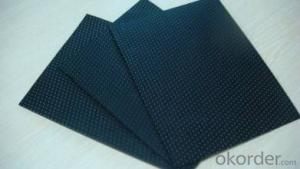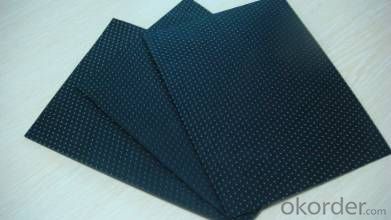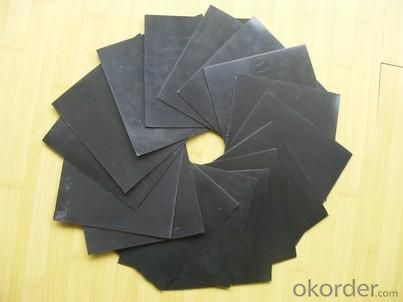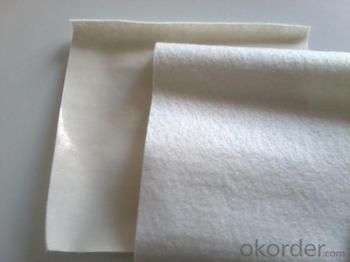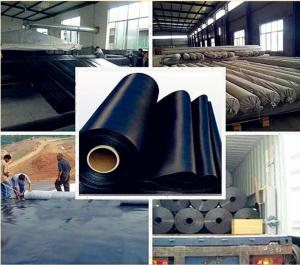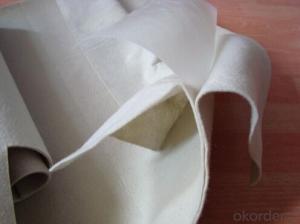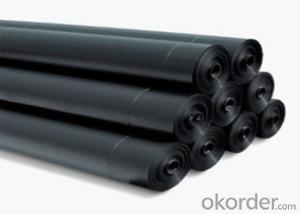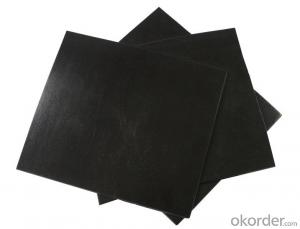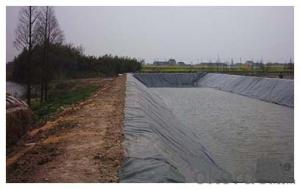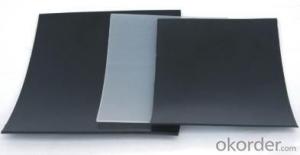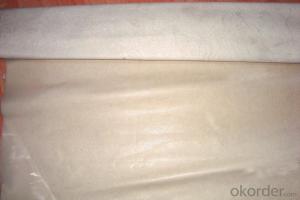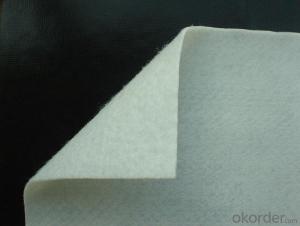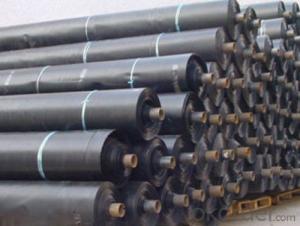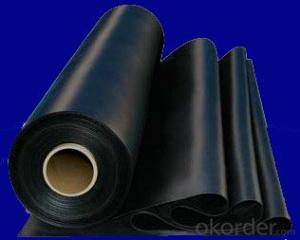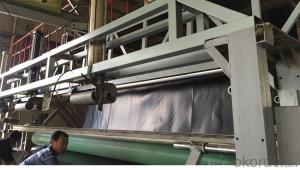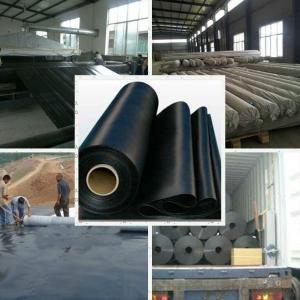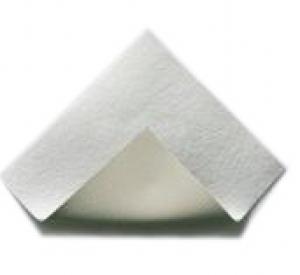Export Geomembrane - PE/EVA/ECB Geomembrane with Different Colors, Waterproof Expert, Best Made in China
- Loading Port:
- Tianjin
- Payment Terms:
- TT OR LC
- Min Order Qty:
- 2000 m²
- Supply Capability:
- 9000000 m²/month
OKorder Service Pledge
OKorder Financial Service
You Might Also Like
Product Information
Geomembrane is a kind of waterproof material with basic raw material of high molecular polymer. It is mainly divided into PE geomembrane, PVC geomembrane, CPE geomembrane and all kinds of composite geomembrane
Complete variety of specifications of width and thickness. Thickness: 0.08-2mm/Width: 2-16m .
Excellent environmental stress resistant cracking performance.
Excellent performance of chemical erosion resistance.
Big scope of application temperature and long service life .
Applied in landfill waste site, sewage and filth treatment site, tailings depot and underground construction project.
Geomembrane Product Poperties
Necessary Data
Speification | Index | |||
GL | GH | |||
GL-1 | GL-2 | GH-1 | GH-2 | |
| Tensile strength MPa | ≥14 | ≥17 | ≥25 | |
| Elongation at break% | ≥400 | ≥450 | ≥550 | |
| Right angle tearing strengthN/mm | ≥50 | ≥80 | ≥110 | |
| Carbon soot quantity | ≥2 | |||
| Environmental stress resistant cracking performance | -- | -- | ≥1500 | |
| Oxidation induction time at 200℃min | -- | -- | ≥20 | |
| Permeability coefficient of vapor(g·cm/cm2·s·pa) | ≤1.0x | |||
| Impact degradation performance at -70℃ | Pass | |||
| dimension stability% | ±3 | |||
Note: GL-1: common low-density PE geomembrane
GL-2: flexible PE-acetic acid, EVA geomembrane
GH-1: common high (medium) density PE geomembrane
GH-2: environment protective common high (medium) density PE geomembrane
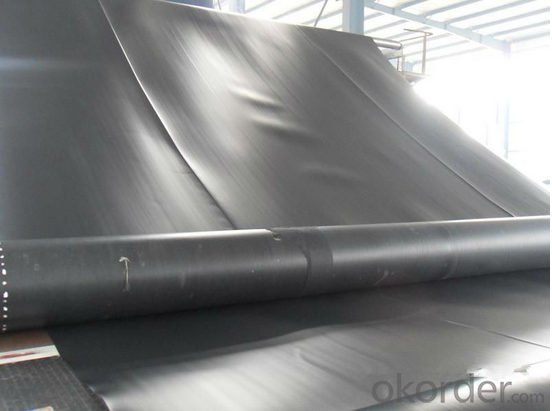
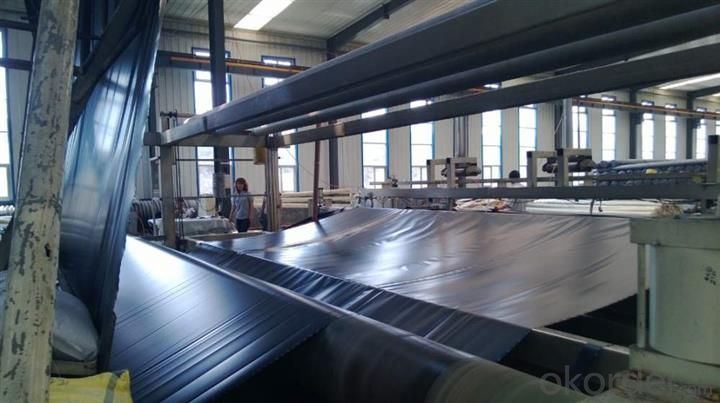
Packaging & Delivery
| Packaging Details: | white color Smooth Surface LDPE geomembrane 1,0.5MM: width 5.8MXlength100M per roll, 66rolls,38280M2/20'gp 2,0.75MM:width 5.8MXlength 50M per roll,80rolls,23200M2/20'gp 3,1.0MM: width 5.8m*length 50m per roll, 66rolls,19140M2/20'gp 4,1.5MM: width 5.8m*length 50m per roll, 40rolls,11600M2/20'gp 5,2.0MM:width 5.8m*length 50m per roll, 30rolls,8700M2/20'gp |
| Delivery Detail: | within 7days after order confirmation |
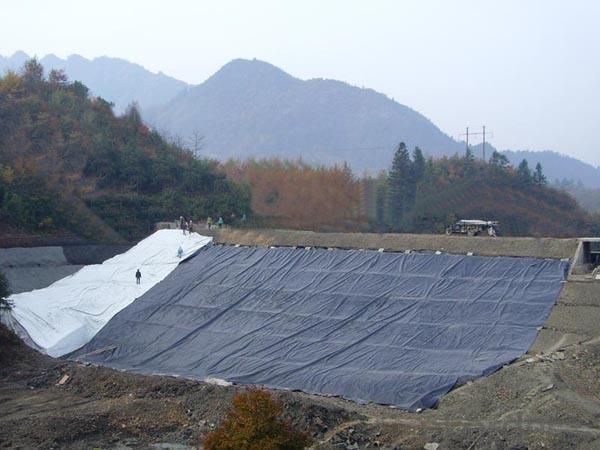
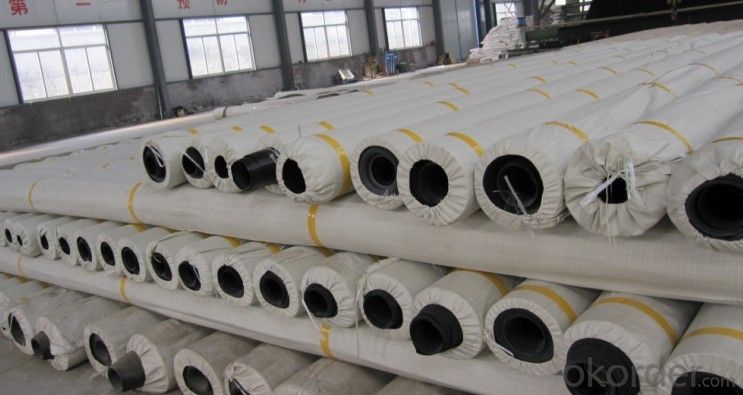
F&Q
1. Can you send samples to us ?
Yes , free samples could be provided , but customer need pay for the freight cost .
After order placed , the freight charge could be refund .
2. What’s your Payment term ?
T/T , L/C
3. What’s your delivery method ?
By sea , By train , etc
4. Waht's your MOQ quantity ?
MOQ is one 20'container , the quantity could be negotiable .
- Q: Can geomembranes be used for golf course water features?
- Yes, geomembranes can be used for golf course water features. Geomembranes are impermeable liners made from synthetic materials that can effectively contain water and prevent leakage. They can be used to line ponds, lakes, and other water features in golf courses, ensuring proper water containment and preventing water loss.
- Q: How does the soft film ceiling?
- The suspended ceiling of the soft film smallpox is very good. And the suspended ceiling of the whole decoration is in an very important position. So the room top need to be appropriate decorated, not only to beautify the indoor environment, but also to create a rich and colorful art interior space image. In the selection of decorative materials and design of the ceiling, the principles of material-saving, solid, safe, beautiful and functional are followed.
- Q: How do geomembranes contribute to erosion control in land development and housing construction?
- Geomembranes contribute to erosion control in land development and housing construction by acting as a barrier between the soil and water. They prevent water from infiltrating the soil, thus reducing the potential for erosion. Additionally, geomembranes can be used to line ditches, ponds, and other water management structures, preventing the erosion of nearby soil and ensuring proper drainage. Overall, geomembranes help to stabilize the soil and protect against erosion, ensuring the longevity and sustainability of land development and housing construction projects.
- Q: What is the role of geomembranes in industrial wastewater treatment?
- Geomembranes play a crucial role in industrial wastewater treatment by acting as a barrier to prevent the leakage or contamination of the surrounding environment. These impermeable membranes are used to line containment ponds, lagoons, and tanks, effectively containing and isolating the wastewater. They also prevent seepage into the ground, protecting groundwater sources from pollution. Additionally, geomembranes help in the efficient management of wastewater by facilitating the collection, storage, and subsequent treatment of industrial effluents, ensuring environmental compliance and safeguarding public health.
- Q: What are the installation requirements for geomembranes in landfill caps?
- The installation requirements for geomembranes in landfill caps typically include proper surface preparation, including removal of debris and smoothing of the subgrade. Additionally, the geomembrane should be placed on a geotextile cushion to protect it from punctures. Seams must be properly welded or bonded to ensure a watertight seal. Finally, the geomembrane should be properly anchored and protected from damage during construction activities.
- Q: What is the difference between the matte screen stick membrane and common film
- high definition film, as its name, the definition is relatively high, but it is not soiling resistance, especially in the summer it is sweating, easy dirty. Matte film is relatively good in the screen cleaner protection, but it is relatively not so clear
- Q: What is the use of glass curtain wall stick membrane?
- Glass curtain wall may be self-destruction, it is often occurs that glass fall from high altitude, the stick membrane can stick the broken pieces of glass, and don't let it splash to hurt people, another point is insulation, large areas of glass will lead to high temperature in room. under the situations like this, you need to stick LLumar glass stick membrane with good insulation, explosion-proof function.
- Q: composite geo-membrane's introduction
- composite geo-membrane, it's widely used in canal seepage control project. In recent years, a large number of applications and their effectiveness of geosynthetics in civil engineering, in particular flood rescue project, attracts high attention of engineering and technical staff. For geosynthetics technology, from anti-seepage, filtration, drainage, reinforcement, protection and other aspects, our nation has proposed normative technical requirements, which has greatly accelerated the pace of the popularization and application of new materials. The material is widely used in the irrigation channel anti-seepage project, combined with the construction practice, we will talk about the application technology of geomembrane.
- Q: Which is better for geomembrane hot melting in the middle of sliding layer of high-speed railway bridge two cloth and one membrane, lapping or docking? And what is the lapping length if it is lapping hot melting?
- In general, it should not be cut according to graphic size. Shorten joint length and strain as far as possible. After geomembrane pavement, the lap?width between films should be not less than 10 cm. 4. Usually set at a corner and abnormal section. 6, arrange along the gradient direction and avoid accidental damage to membrane when the temperature is low. Lap width between membranes is generally not less than 10 cm. You should measure the accurate relative size. Do not weld as far as possible during geomembrane pavement . In addition to the special requirements, Do not walk on the membrane or carry on the membrane.
- Q: Can geomembranes be used in oil and gas storage tanks?
- Yes, geomembranes can be used in oil and gas storage tanks. Geomembranes provide an effective barrier against leaks and contamination, helping to prevent environmental damage. They are commonly used to line storage tanks and ensure the integrity of the containment system.
Send your message to us
Export Geomembrane - PE/EVA/ECB Geomembrane with Different Colors, Waterproof Expert, Best Made in China
- Loading Port:
- Tianjin
- Payment Terms:
- TT OR LC
- Min Order Qty:
- 2000 m²
- Supply Capability:
- 9000000 m²/month
OKorder Service Pledge
OKorder Financial Service
Similar products
Hot products
Hot Searches
Related keywords
